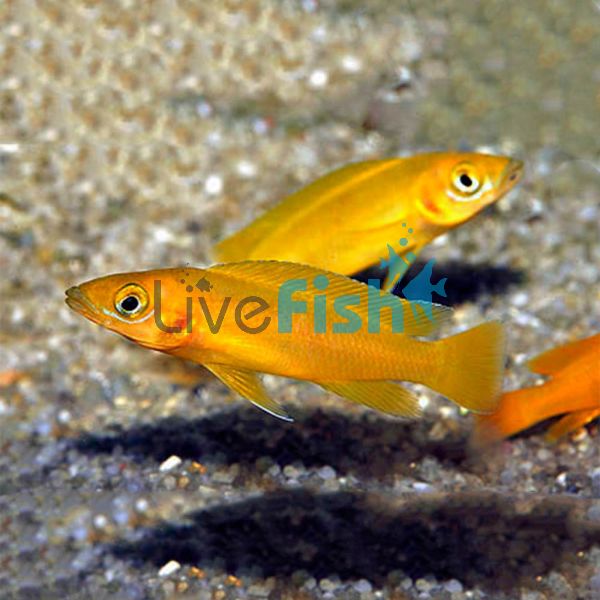Orange Lemon Cichlid 5cm
The orange lemon cichlid has been swiftly increasing in popularity in the aquarium hobby, because of its small size, vibrant coloration, and ease of care. These stunning fish originally come from Lake Tanganyika and they're actually a species of shell dweller meaning that they spend a lot of living in and amongst shells and only reach around 10 cm as an adult these fish make for a great entry-level African cichlid because they can be kept in smaller aquariums.
- Buy 4 for $34.78 each and save 20%
- Buy 6 for $30.44 each and save 30%
Orange Lemon Cichlid
The orange lemon cichlid has been swiftly increasing in popularity in the aquarium hobby, because of its small size, vibrant coloration, and ease of care. These stunning fish originally come from Lake Tanganyika and they're actually a species of shell dweller meaning that they spend a lot of living in and amongst shells and only reach around 10 cm as an adult these fish make for a great entry-level African cichlid because they can be kept in smaller aquariums.
The name suggests an orange lemon seclude has a stunning, vibrant sunset coloration from head to tail and though they don't have much in terms of patterning, the simple but striking yellow coloration is truly eye-catching in the aquarium. The great thing is that even as juveniles the orange lemon cichlids have this bright yellow coloration, which means they look good from juvenile to adult unlike a lot of other African cichlids that only show bright coloration when they're fully mature. Orange lemon cichlids are also relatively peaceful and prefer to be kept in colonies which means they look absolutely stunning in numbers as their colour shines in the tank.
Breeding these fish is relatively easy. No, they're no obvious distinguishing factors between males and females as long as a small colony is kept with a few caves or large shells, the cichlids will eventually breed.
Tank Recommendations for your Orange Lemon Cichlid
As the orange lemon cichlid only reaches around 10 cm, an adult pair of these fish can easily be kept in a tank of around 70 litres. They will however thrive in larger aquariums when kept in a colony of 6 or more. Since these cichlids spend a lot of time near the bottom of the aquarium it is best to ensure that there's a decent footprint.
Orange lemon cichlids can be territorial, especially during breeding time however their aggression is quite minimal compared to other African cichlids. They should be provided with a plentiful supply of shells and caves for security and just to diffuse the minimal aggression. These are also tropical fish which are best kept at 24-26 degrees.
Suitable Tank Buddies
The orange lemon cichlids can be kept with a range of other smaller and relatively peaceful African cichlids. Since these fish require a higher PH of around 8 the tank mates chosen should be adaptable to this.
Usually Compatible
Other shell dweller species like neolamprologus mulifaciatus and smaller African cichlids such as black calves, furcifer cichlids and julidochromis.
Sometimes Compatible
Frontosa, smaller Mbuna species, and other larger but somewhat peaceful African cichlids like Mdoka whitelips.
Rarely Compatible
Aggressive African cichlid species like fuscodichromis and polystigma.
Feeding your Orange Lemon cichlid
Orange lemon cichlids will take to aquarium foods very easily. They will take a wide range of pellets, flakes, and frozen foods. By giving them a varied diet, it ensures that they have optimal nutrition.
The ideal diet would be good quality, small, and slow food, supplemented with green matter like algae flakes or sheets. Feeding any foods with natural colour enhancers would also be great as this will really bring out the yellows in this fish.
| Scientific Name | Neolamprologus Leleupi |
|---|---|
| Care Level | Easy |
| Common Names | Orange Lemon Cichlid, Orange Leleupi Cichlid |
| Diet | Omnivore |
| Fish Family | Cichlidae |
| Lifespan (years) | 7 |
| Max. Length (cm) | 10 |
| Min. Tank Volume (l) | 70 |
| Origin | Africa |
| Sociability | Peaceful |
| Venomous | No |
| Water Conditions | 24-26° C, pH 7.5-8.5 |
| Plant Safe | No |




